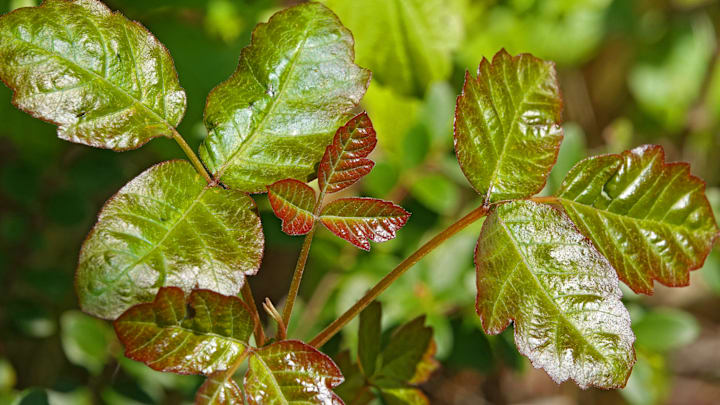Nature is wonderful, except when it gives you a blistering and infected rash. That’s one possible consequence of encountering both poison ivy and poison oak, two similar—but different—plants that can absolutely ruin your outlook on life. But what’s the difference between them?
At first glance, not much: Both poison ivy and poison oak are three-leaved plants that prompted the mnemonic “leaves of three, let it be.” Both also bloom white flowers and can feature white or yellow berries. But upon closer inspection, poison oak features a more washed-out shade of green and has hairs on both sides of the leaflets. Poison oak leaflets are also rounded at the tip compared to poison ivy’s pointy ends. Both plants can change colors, with poison oak turning red in the fall.
Poison oak also tends to manifest as a shrub in the eastern and southern parts of the country and as a vine in the western parts.
Both poison ivy and poison oak contain urushiol, the oily resin substance that’s behind the maddening allergic response mounted by your body, often within 48 hours.
If you realize too late that you’ve exposed yourself to either plant, it’s best to use soap and water to wash off what you can. That could minimize your chances of developing a rash. If you do, you can treat the itching and blistering with calamine lotion.
Because urushiol tends to stick around, you’ll also want to thoroughly wash clothes, camping gear, or anything else that has come in contact with either plant.
If that happens to be on your dog, good news: canines rarely react to urushiol. But to avoid having it rub off on humans, you’ll want to shampoo them while wearing gloves.
